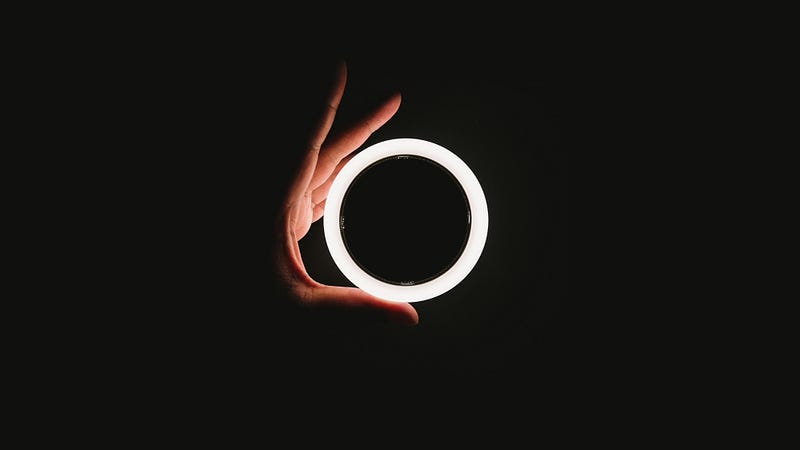What Causes Hair to Curl? Unraveling the Science Behind Hair Textures
Written on
Chapter 1: The Hair Transformation Experience
A few months back, I treated myself to a hair appointment at my neighborhood salon—something I hadn’t done in nearly two years due to the pandemic. I always find it remarkable how stylists can effortlessly create stunning looks while maintaining an engaging conversation. My stylist managed to trim my split ends, perfectly shape my hairline, and skillfully use heat to turn my usual frizzy locks into a sleek, shiny hairstyle.
Is there anything quite like the feeling right after a fresh haircut? After my appointment, I stopped by the local supermarket for some milk, and I couldn’t help but strut down the aisles, showing off my new look, much to the amusement of other shoppers.
However, my sleek style didn’t last long. As I made my way home in the drizzle, frizz began to take over despite the salon’s best efforts. My glossy hair was soon replaced by the familiar chaos of bedhead. Oh well, it was nice while it lasted.
This experience led me to ponder the reasons behind the vast differences in hair textures—from pin-straight strands to voluminous curls. What causes this variety, and why do environmental factors like heat and humidity affect our hair’s texture?
Chapter 2: The Genetics of Curly Hair
Naturally curly hair is primarily influenced by genetics—you inherit this trait from your parents. Researchers suggest that multiple genes contribute to curliness, and it’s the unique combination of these genes in each person that determines their specific hair texture.
Environmental conditions also play a significant role. While curliness is encoded in your DNA, aspects like humidity and even hormonal changes can influence hair texture. I observed this change when I moved inland after years near the coast.
If you examine someone with naturally curly hair closely, you’ll notice that their hair follicles are distinctively shaped. Curly-haired individuals typically have more flattened follicles, while those with straight hair have rounder, symmetrical follicles. The growth patterns also differ; straight hair tends to develop in a more symmetrical manner.
For those of us with wavy hair, like myself, the follicles are oval—neither perfectly round nor flat.

Chapter 3: The Chemistry of Hair Styling
It’s fascinating how such a small difference in follicle shape can lead to dramatic variations in hair texture. But what happens when we style our hair?
Hair is composed of keratin fibers, a type of protein. These fibers are held together by various bonds, including relatively weak hydrogen bonds. When we apply heat—using a blow dryer, straighteners, or curling irons—the hydrogen bonds in the keratin can be broken, allowing us to reshape our hair. Once the hair cools, these bonds reform in their new structure. However, this effect is temporary, especially in humid conditions, as water molecules can disrupt the hydrogen bonds, causing hair to return to its natural state.
For a more enduring change in hair texture, specific chemicals can be used. Stronger bonds, known as disulfide bridges, can be broken by reducing agents and then reformed with oxidizing agents. Because disulfide bridges are covalent bonds, they provide a much longer-lasting alteration to hair structure.

Understanding hair structure from both genetic and chemical perspectives is truly captivating—a small comfort the next time my hair decides to frizz in the rain.
Key sources:
Medland SE, Zhu G, Martin NG. Estimating the heritability of hair curliness in twins of European ancestry. Twin Res Hum Genet. 2009 Oct;12(5):514–8. doi: 10.1375/twin.12.5.514. PMID: 19803779.
Cloete E, Khumalo NP, Ngoepe MN. The what, why and how of curly hair: a review. Proc Math Phys Eng Sci. 2019 Nov;475(2231):20190516. doi: 10.1098/rspa.2019.0516. Epub 2019 Nov 20. PMID: 31824224; PMCID: PMC6894537.
Thibaut S, Barbarat P, Leroy F, Bernard BA. Human hair keratin network and curvature. Int J Dermatol. 2007 Oct;46 Suppl 1:7–10. doi: 10.1111/j.1365–4632.2007.03454.x. PMID: 17919197.
Want to know more about me and what I enjoy writing? Check out the link below:
Who I am and what I like to write about (plus a disclaimer for my stories — yawn!)
Ah, it seems you've stumbled upon my profile page—pleased to meet you!